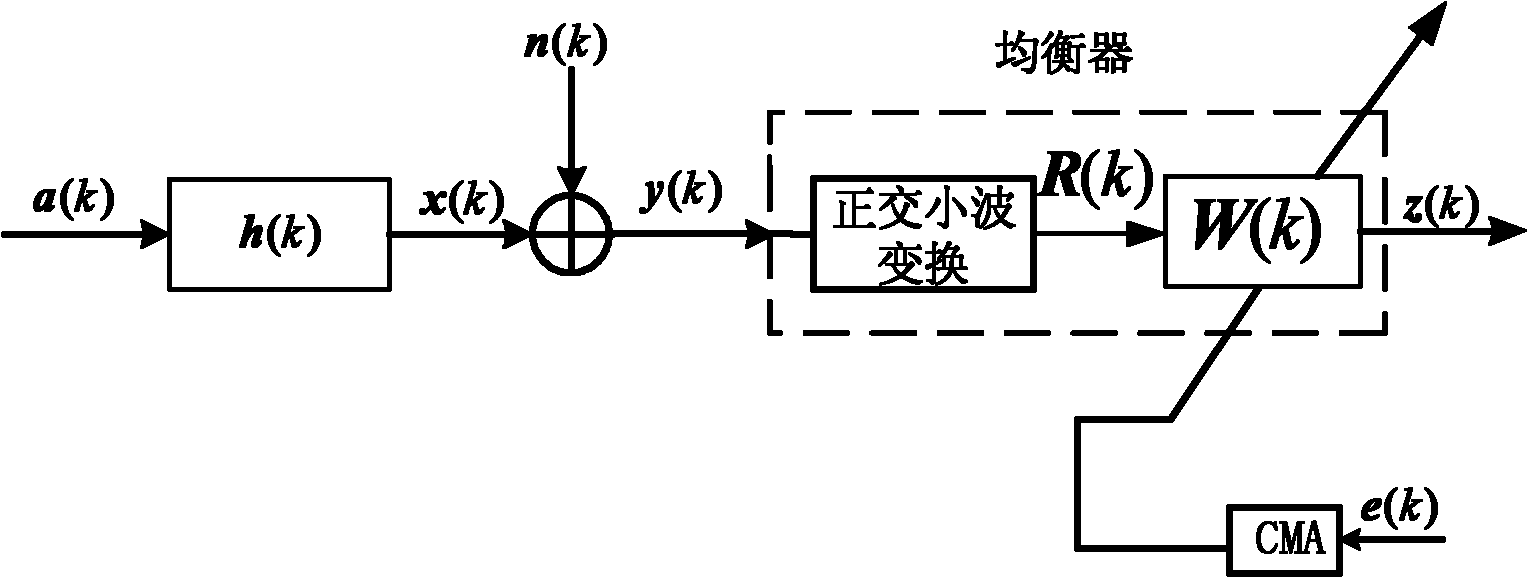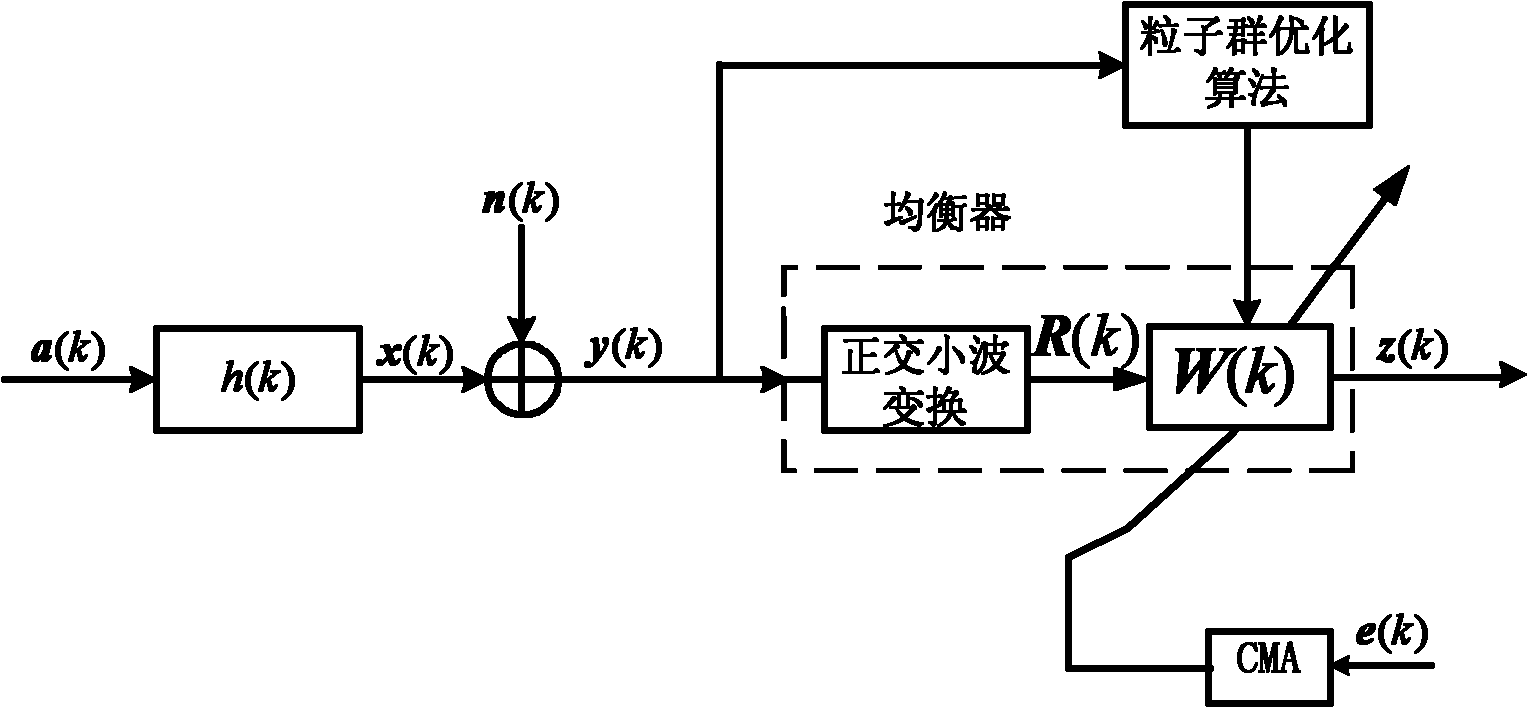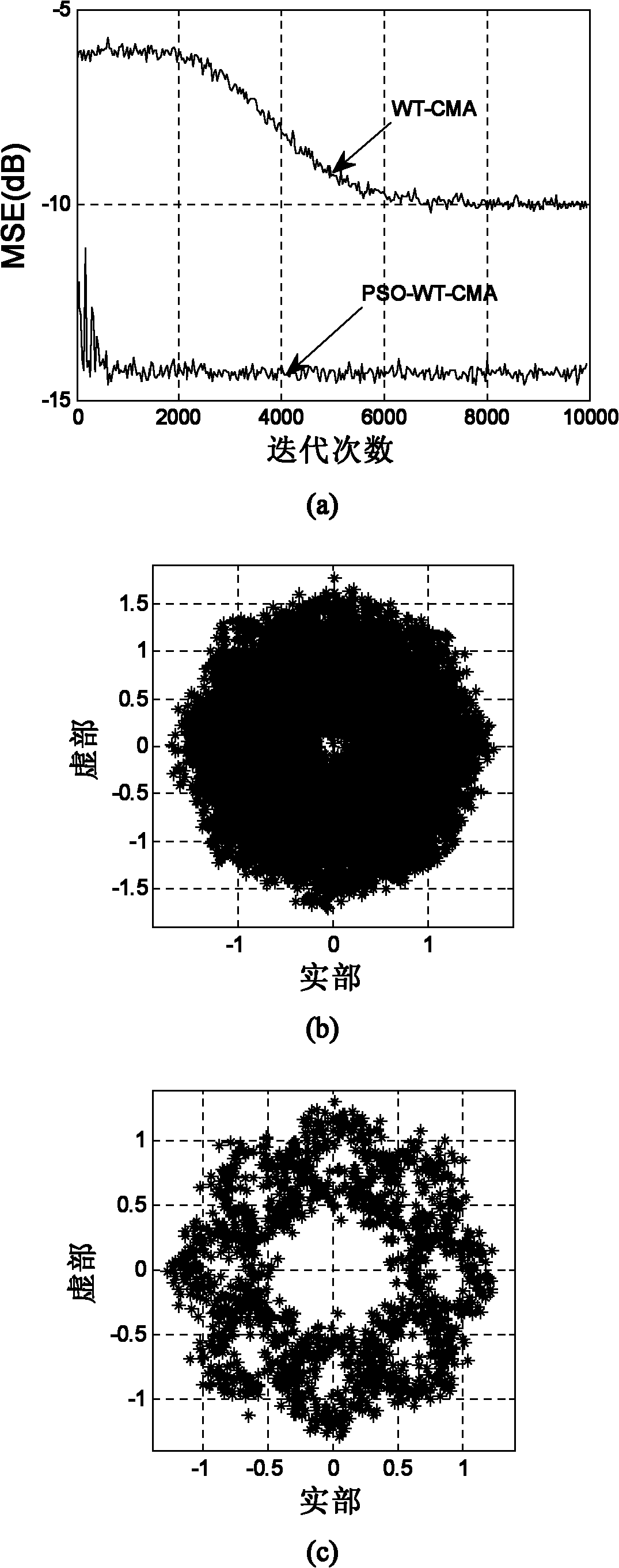Particle swarm optimization based orthogonal wavelet blind equalization method
A technology of particle swarm optimization and orthogonal wavelet, applied in baseband system components, shaping network in transmitter/receiver, electrical components, etc., can solve the problem that it is difficult to obtain the global minimum point of the cost function Optimal solution, small amount of computation, etc.
- Summary
- Abstract
- Description
- Claims
- Application Information
AI Technical Summary
Problems solved by technology
Method used
Image
Examples
Embodiment
[0080] In order to test the effectiveness of the method (PSO-WT-CMA) of the present invention, a simulation experiment was carried out with the WT-CMA method as a comparison object.
[0081] [Example 1] The underwater acoustic channel is h=[0.3132-0.1040 0.8908 0.3134]; the transmitted signal is 8PSK, the equalizer weight length is 16, and the signal-to-noise ratio is 20dB; in the WT-CMA method, the 16th tap coefficient is set is 1, and the rest are 0; its step size is μ WT-CMA =2.5×10 -3 ; The step size of the PSO-WT-CMA of the present invention is μ PSO-WT-CMA =1.5×10 -4 . The input signal of the channel is decomposed by DB4 orthogonal wavelet, the decomposition level is 2 layers, the initial value of power is set to 4, and the forgetting factor β=0.99; 1000 times of Monte Carlo simulation results, such as image 3 shown.
[0082] image 3 (a) shows that: on the convergence speed, the PSO-WT-CMA of the present invention is about 5500 steps faster than the WT-CMA. In t...
PUM
 Login to View More
Login to View More Abstract
Description
Claims
Application Information
 Login to View More
Login to View More - R&D
- Intellectual Property
- Life Sciences
- Materials
- Tech Scout
- Unparalleled Data Quality
- Higher Quality Content
- 60% Fewer Hallucinations
Browse by: Latest US Patents, China's latest patents, Technical Efficacy Thesaurus, Application Domain, Technology Topic, Popular Technical Reports.
© 2025 PatSnap. All rights reserved.Legal|Privacy policy|Modern Slavery Act Transparency Statement|Sitemap|About US| Contact US: help@patsnap.com



